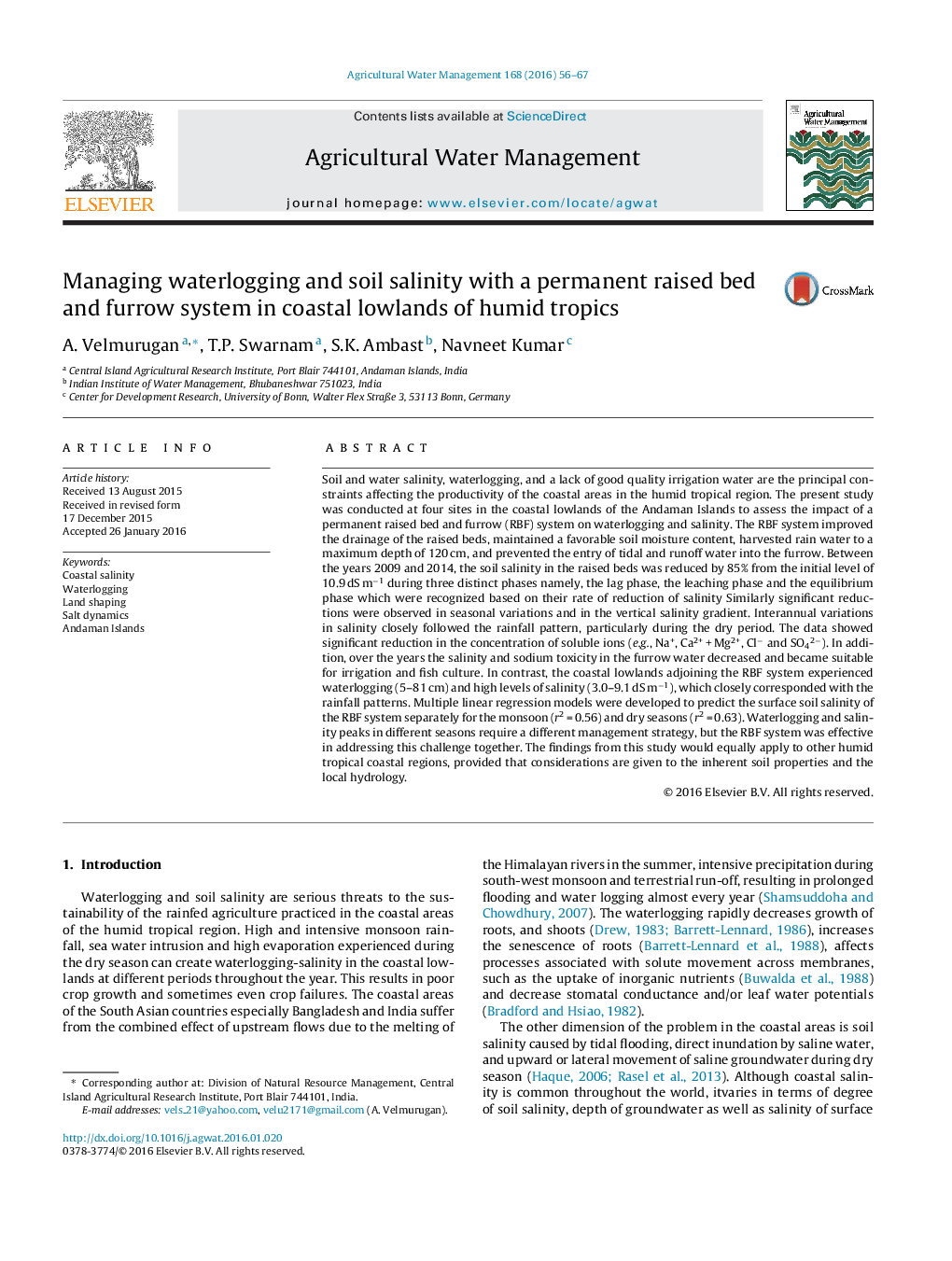| کد مقاله | کد نشریه | سال انتشار | مقاله انگلیسی | نسخه تمام متن |
|---|---|---|---|---|
| 6363561 | 1622912 | 2016 | 12 صفحه PDF | دانلود رایگان |
عنوان انگلیسی مقاله ISI
Managing waterlogging and soil salinity with a permanent raised bed and furrow system in coastal lowlands of humid tropics
ترجمه فارسی عنوان
مدیریت آبیاری و شوری خاک با استفاده از یک سیستم مرتفع و زهکشی دائمی در مناطق ساحلی مناطق گرمسیر مرطوب
دانلود مقاله + سفارش ترجمه
دانلود مقاله ISI انگلیسی
رایگان برای ایرانیان
کلمات کلیدی
شوری ساحلی، غرق شدن شکل گیری زمین، پویایی نمک، جزایر اندام
موضوعات مرتبط
علوم زیستی و بیوفناوری
علوم کشاورزی و بیولوژیک
علوم زراعت و اصلاح نباتات
چکیده انگلیسی
Soil and water salinity, waterlogging, and a lack of good quality irrigation water are the principal constraints affecting the productivity of the coastal areas in the humid tropical region. The present study was conducted at four sites in the coastal lowlands of the Andaman Islands to assess the impact of a permanent raised bed and furrow (RBF) system on waterlogging and salinity. The RBF system improved the drainage of the raised beds, maintained a favorable soil moisture content, harvested rain water to a maximum depth of 120Â cm, and prevented the entry of tidal and runoff water into the furrow. Between the years 2009 and 2014, the soil salinity in the raised beds was reduced by 85% from the initial level of 10.9Â dSÂ mâ1 during three distinct phases namely, the lag phase, the leaching phase and the equilibrium phase which were recognized based on their rate of reduction of salinity Similarly significant reductions were observed in seasonal variations and in the vertical salinity gradient. Interannual variations in salinity closely followed the rainfall pattern, particularly during the dry period. The data showed significant reduction in the concentration of soluble ions (e.g., Na+, Ca2+Â +Â Mg2+, Clâ and SO42â). In addition, over the years the salinity and sodium toxicity in the furrow water decreased and became suitable for irrigation and fish culture. In contrast, the coastal lowlands adjoining the RBF system experienced waterlogging (5-81Â cm) and high levels of salinity (3.0-9.1Â dSÂ mâ1), which closely corresponded with the rainfall patterns. Multiple linear regression models were developed to predict the surface soil salinity of the RBF system separately for the monsoon (r2Â =Â 0.56) and dry seasons (r2Â =Â 0.63). Waterlogging and salinity peaks in different seasons require a different management strategy, but the RBF system was effective in addressing this challenge together. The findings from this study would equally apply to other humid tropical coastal regions, provided that considerations are given to the inherent soil properties and the local hydrology.
ناشر
Database: Elsevier - ScienceDirect (ساینس دایرکت)
Journal: Agricultural Water Management - Volume 168, April 2016, Pages 56-67
Journal: Agricultural Water Management - Volume 168, April 2016, Pages 56-67
نویسندگان
A. Velmurugan, T.P. Swarnam, S.K. Ambast, Navneet Kumar,
